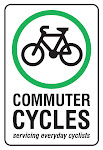Mokpo – Wolchulsan National Park (41km)

After disembarking the ferry from Jeju (via the vehicle ramp – blissfully easy), we found ourselves in the middle of a sunny day in a dusty port city surrounded by drying fish and freelance poets (he gave me his name card in case he could be of any assistance). This region is also the home of the archetypal Korean movie gangster. Although not without its charms, we felt we could find a more picturesque setting for our Surlys, and so we headed off for a night of camping in nearby Wolchulsan National park. This sunny Saturday afternoon had created a surreal gathering of children on the riverside bike path on every form of wheeled transport imaginable – a fun fairground atmosphere in one sense, and a bunch of unpredictable moving obstacles in another...
Taking ‘Beautiful Road A’ - a side-route off the main road - we found ourselves pedaling away down a boulevard of cherry blossoms, with craggy peaks off to our right. Our good fortune continued, as despite this being a Saturday night (busiest night of the week in any Korean National Park), there was a free raised wooden platform for us to pitch our tent on (unusual, I know) amongst the bevy of hiking and rock-climbing groups who gathered under banners strung between the trees. As we had also failed to cater adequately, the choice of restaurants nearby (another feature of national parks a little foreign to Australians) filled the gap nicely. Though the night was noisy, both due to late night drinkers and early morning hikers, we were well rested for our final day of Korean riding.
Wolchusan National park to Gwangju (68 km)
‘Are you Andrew?’ a Korean man asked from inside a silver sedan which had pulled alongside as we descended at reasonable pace. ‘Um.. yes,’ he replied tentatively, wondering if the fame of our blog had followed us all the way to the southern reaches of the country. Well in a sense it had. More precisely though, Han, the editor of the cycling magazine that our Seoul friend Will writes for, had followed us from the city of Yeongam where we had stopped to watch competitors finish a local cycle race. Very kindly, he had also brought baked goods and water – exactly what we needed at that point (my catering skills having failed twice in as many days). Fortuitous and delicious.
 A late and average lunch was followed by a quick shot of vending machine coffee to keep us going on the final wet ride. A quick diversion on coffee: as many of you will know, Ali adheres strongly to the Queensland Department of Health recommendations for tired doctors (see http://www.reuters.com/article/idUSTRE5874AG20090908). Her much vaunted ‘coffee wean’ prior to departure has been thoroughly foiled by the Korean caffeine culture, which sells coffee and an accompanying lifestyle of American-style disposable cup freedom. We started off drinking the somewhat arrogant chainstore Americano coffees and searched far and wide for real coffee beans amongst the endless array of instant coffee mix sachets. Finally, though, we came to admire the cheap (100-500 won), unashamedly sweet and unpretentious vending machine coffee shots that can be found in almost any restaurant or public building.
A late and average lunch was followed by a quick shot of vending machine coffee to keep us going on the final wet ride. A quick diversion on coffee: as many of you will know, Ali adheres strongly to the Queensland Department of Health recommendations for tired doctors (see http://www.reuters.com/article/idUSTRE5874AG20090908). Her much vaunted ‘coffee wean’ prior to departure has been thoroughly foiled by the Korean caffeine culture, which sells coffee and an accompanying lifestyle of American-style disposable cup freedom. We started off drinking the somewhat arrogant chainstore Americano coffees and searched far and wide for real coffee beans amongst the endless array of instant coffee mix sachets. Finally, though, we came to admire the cheap (100-500 won), unashamedly sweet and unpretentious vending machine coffee shots that can be found in almost any restaurant or public building. Though Korea is developed in many ways, it has failed me (Ali) in one. Despite the abundance of soy milk products and the aforementioned ubiquitous varieties of coffee, no-one yet has brought these two together in the sublime combination that is the soy latte.
Though Korea is developed in many ways, it has failed me (Ali) in one. Despite the abundance of soy milk products and the aforementioned ubiquitous varieties of coffee, no-one yet has brought these two together in the sublime combination that is the soy latte.In our final couple of days in Gwangju, we learnt a little more of the somber side of Korean history, visiting the 5.18 National Memorial Cemetery, commemorating the massacre of civilians by the military regime of the day. Of note was the fact that the first time a peaceful handover of power occurred in Korea was in 1998.
And an update on a previous episode: How to get to Seoul from Gwangju by bus.
1. Place bikes and panniers in empty undercarriage of bus with help from driver.
2. Recline in wide, comfortable seats with leg rests.
3. Snooze.
4. Arrive in Seoul, some 30 minute ride from final destination (revisiting our first ride in Seoul)
5. Wonder why we ever caught the train from Gyongju to Busan.
Our final days in Seoul ended, not unpredictably, with a cycling theme. Will and Jully invited us along to a meeting of Korean cyclists interested in overseas touring. It had all the elements of Korea that we have grown to love; bicycles, people who love bicycles, tasty banchan, shots of soju and streetfood. Despite not following all the Korean talk we picked up the frequently used word cha-jon-go (bicycle) and felt part of their clan.




0 comments:
Post a Comment